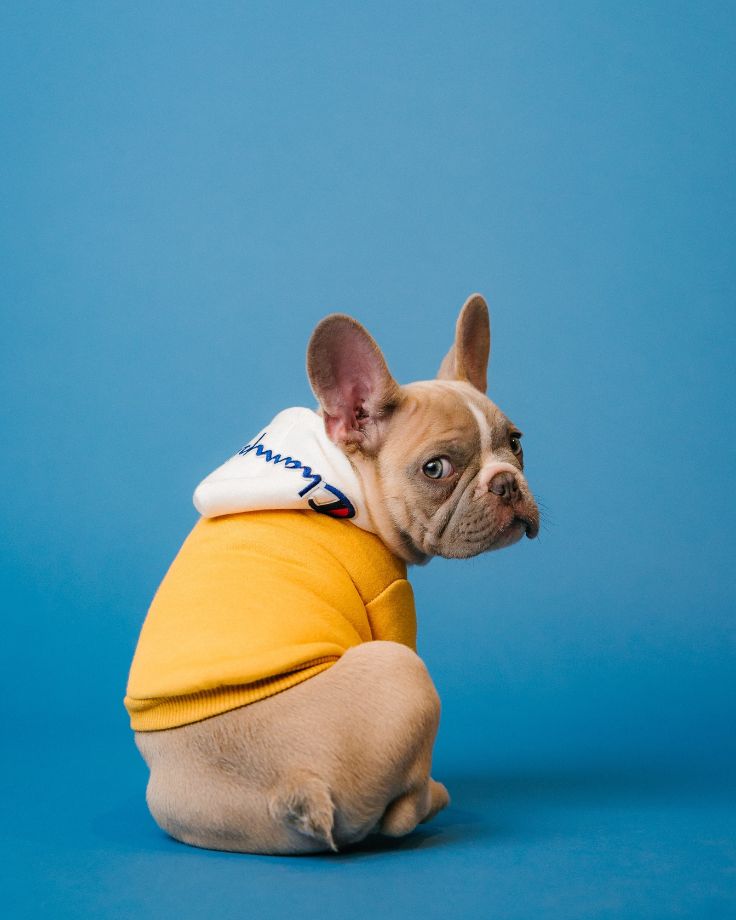Dogs can be cheeky and do a lot of strange things, but scooting is probably one of the most annoying things they do. Scooting behavior suggests an underlying issue, even though it may appear a little mischievous to new pet parents. Dog scooting is a sign that there is an anal problem that needs to be fixed.
Here are the top home remedies for dog scooting as well as information on why dogs scoot.
Table of Contents
- Why Do Dogs Scoot?
- How Do You Express Anal Glands?
- Useful Home Remedies For Dog Scooting
- Clean Your Dog’s Bottom On A Regular Basis
- Feed Them More Fiber
- Try Fish Oil
- Anti-inflammatory Treatments Like Witch Hazel Can Provide Some Relief To Your Dog’s Sore Bottoms
- Apply Warm Compresses To Your Dog’s Inflamed Anal Glands
- Keep Track Of Your Dog’s Weight
- Warm Compresses Can Help
- Exercise Your Dog
- Moisturize Its Diet
- When Should You Seek Veterinary Help?
- Conclusion
Why Do Dogs Scoot?
Most of the time, dogs drag their butts to alleviate discomfort on rough surfaces. An itch, inflammation, constipation, or an underlying problem can all lead to discomfort. Here are a few reasons your dog might be scooting:
Poo Or Dirt On Their Rear End
Poo may become stuck on your dog’s hair if they are passing loose or diarrhoeic stools. See if there is any trash or poop stuck in their rear. To avoid poop sticking to your dog’s coat, it would be best to trim its hair short.
Constipation
On the other hand, if your dog has trouble eliminating, it may be scooting to relieve its pain or discomfort. Check to see if you’ve changed your diet; however, we’ll cover diet adjustments in the section below that discusses remedies.
Allergies
Like people, dogs are allergic to certain foods, season changes, and other things. Most frequently, yeast infections and dry, flaky skin come along with allergies that cause dog scooting. Take note of the animal’s diet and everything in the house if you think the scooting behavior is caused by allergies so the vet can perform tests more easily.
Parasites Infection
In this case, worms may also be at fault. You can see worms in your dog’s feces or around the anus when they have a parasitic infection. Your dog may be dragging its bum frequently if it has parasites, which can be extremely uncomfortable and itchy. There are numerous worm species that can infect dogs, including ringworm and tapeworm, and each has a unique life cycle. The advice of a veterinarian is required for the best worm treatment.
Anal Sac Infection
Your dog has two anal sacs on its rectum. When a dog defecates, the fluid that has filled these sacs naturally leaks out. Although the fluids have an unpleasant smell to humans, dogs use the pheromones in them to mark their territories and gather information about other dogs.
The anal sacs can clog when they are unable to eliminate the fluid on their own occasionally. When the glands are fully swollen for a long time, the anal sacs become inflamed, itchy, and occasionally painful. An emergency vet visit is required when anal glands that are overfilled because they can become impacted, infected, or even burst if neglected for too long.
The likelihood that your dog is having problems with its anal sac increases if you notice it scooting across the floor for extended periods of time, chasing its tail more frequently than usual, and licking its behind constantly.
How Do You Express Anal Glands?
It’s not advised to express your dog’s anal glands unless you are certain you are competent to do so. If your dog doesn’t have an anal gland problem, expressing them could lead to inflammation and anal gland sacculitis.
If you believe your dog may have a problem with the anal glands, get in touch with a professional. Vets and dog groomers can express your dog’s anal sacs for you.
However, you’ll need some rubber gloves, paper towels, and a steady hand if you’re absolutely certain you can express your dog’s anal glands yourself.

- Put on some rubber gloves first because anal gland fluid has a strong smell.
- Your dog’s bottom needs an absorbent layer to absorb the liquid, so place some paper towels or a puppy training pad underneath.
- Your dog’s anal sacs can be gently squeezed by lifting up the tail and using your thumb and forefinger to do so. The 4 or 5 o’clock and 7 or 8 o’clock positions are where you can locate one of the anal glands. Depending on the size of your dog, they should be firm and pea- or plum-sized.
- The sacs have reached full expression when you can hardly feel them.
- To get rid of any leftover debris, thoroughly clean and wipe your dog’s bottom.
Useful Home Remedies For Dog Scooting
Clean Your Dog’s Bottom On A Regular Basis
The good news is that your canine friend’s behind may simply be dirty if you see him or her scooting on the floor or scooting after eliminating.
Dogs may become itchy and experience discomfort if dirt, mud, or feces are stuck to their rear end area and have been there for more than an hour or two.
Perhaps while playing in the backyard, your dogs sat down by accident on some leftover dog poop from the previous day that hadn’t been picked up or disposed of. In addition to the dog poop on your dog’s rear end, there may also be one or more ticks there that are making his bottom itchy. Overnight, the dog poop became infested with ticks and fleas.
Your pets will scoot their bottoms across your floor as a natural reaction to this discomfort. If you see your animal companion scooting on the floor, we strongly advise you to clean his behind.
Feed Them More Fiber
Dogs typically enjoy a high-fiber diet, so you should add more fiber to their diet because it’s healthy. The best thing about a fiber-rich diet is that it can help them not only avoid constipation but also empty their anal glands, which makes it easier for them to urinate and causes them to scoot less.
Chia seeds, flaxseed, squash, and potatoes are some examples of fiber-rich foods that you can add to dog food to help your pet move their bowels more easily. But be sure to keep an eye on how your dog responds to dietary changes.
Try Fish Oil
The natural anti-inflammatory properties of fish oil make it beneficial for both people and animals. Apply it to cotton wool, then use a gentle patting motion to apply it to the inflamed area. Your dog should be able to naturally express his anal glands after a few applications have helped to reduce the swelling.
Anti-inflammatory Treatments Like Witch Hazel Can Provide Some Relief To Your Dog’s Sore Bottoms
The rear end of my Chihuahua started getting very red and inflamed when she started scooting last year. Her bottom was obviously sore, as I could see. When I decided to call the vet for my dog, she advised using witch hazel.
You did indeed read that correctly! This witch hazel beauty product can temporarily relieve itchy skin and sore bottoms brought on by excessive dog scooting.
If you already have an unscented, alcohol-free bottle of witch hazel in your medicine cabinet or on your makeup vanity table, feel free to use it to saturate some cotton balls or cleaning pads. After that, use the cleansing pad or cotton ball to gently apply and wipe your dog’s sore bottom.
Witch hazel’s anti-inflammatory properties help to relieve the itching, inflammation, and soreness in your dog’s rear end that is brought on by excessive scooting.
Apply Warm Compresses To Your Dog’s Inflamed Anal Glands
One of the simplest and most natural home remedies for dogs with inflamed anal glands is probably applying warm compresses to your dog’s inflamed anal glands. That’s because a warm compress helps to reduce some of the inflammation when you apply it to your dog’s bottom.
So here’s what you’ll want to do:
- Add one tablespoon of Epsom salt to a bowl of warm water.
- Stir the salt into the warm water until it dissolves.
- Soak a clean cloth in warm water before using it.
- So that it is not sopping wet, gently wring the warm cloth. It is possible for the warm cloth to be slightly damp and moist.
- Give your dog’s bottom a warm, dry towel to rub on.
- For at least four to five minutes, continue to press the clean, warm cloth against your dog’s bottom and the inflamed anal glands.
- Up until the anal sac, fluids begin to drain on their own, you can repeat steps 3 through 6 as often as necessary.
Keep Track Of Your Dog’s Weight
Dog metabolic diseases can affect both overfed and underfed canine friends, putting your puppies at risk.
The metabolic disease of your pet can actually be impacted by inflamed anal glands, making being underweight, overweight, or obese problems worse.

Because of this, dog owners must monitor the weight of their canine companions by paying closer attention to what they feed their puppies. You should be aware of the ingredients in the food, the nutrients it contains that will benefit your pups, and the daily food requirement when preparing food for your dog.
Knowing the ingredients in the food is crucial because some dog food contains a ton of salt, which not only causes salt poisoning but also harms the kidneys of the dog. The majority of dog food you buy at the grocery store also contains a ton of carbohydrate fillers that are bad for the general health of your canine friend.
Warm Compresses Can Help
Anal sac inflammation can be reduced by applying a warm compress to your dog’s behind. One of the simplest home treatments for anal sac inflammation is a compress, which only requires you to soak a clean towel in warm water with Epsom salt before applying it to the affected area. As often as you can, repeat the process.
Exercise Your Dog
A great way to stimulate your dog’s digestion and help it produce fewer instances of inflammation is to exercise him. Taking your dog for a walk also gives them a chance to go potty in the woods or bushes. They may experience anal sac relief by emptying their stomachs.
Moisturize Its Diet
If you frequently give your dog dry kibble, they are likely to develop constipation, which will make them want to scoot more. So, keep an eye on your pet’s water consumption, especially if your dog isn’t a fan of staying hydrated. To encourage them to sip water as they eat their kibble, add water to it. In order to encourage your pet to drink more water, you might also need to make an investment in a drinking fountain.
When Should You Seek Veterinary Help?
Visiting the veterinarian will be essential if your dog keeps experiencing problems with its anal sacs. The development of cysts nearby may be the cause of an increase in anal sac inflammation cases.
So, if this issue continues, your veterinarian is the best person to identify and address the issue. As soon as this issue starts to come up again, don’t wait to take your pet to the vet.
Conclusion
Scooting by dogs is not amusing for either humans or animals. We should examine our dog more closely and figure out the message it is trying to convey to us instead of reacting angrily to this behavior.
Both you and your dog will find dog scooting to be unpleasant. But with the right information, home remedies for dog scooting, and your veterinarian’s guidance, you can get rid of the discomfort, avoid more serious problems, and give your dog long-lasting relief.
